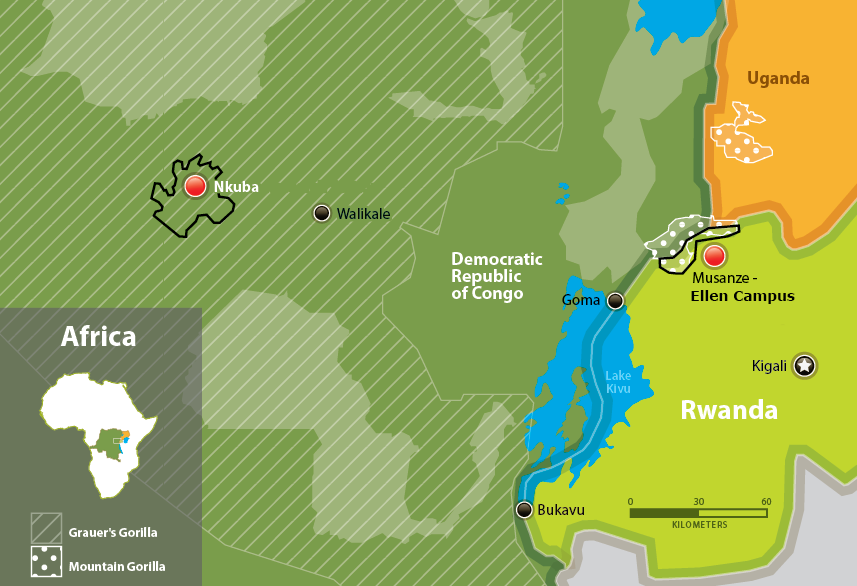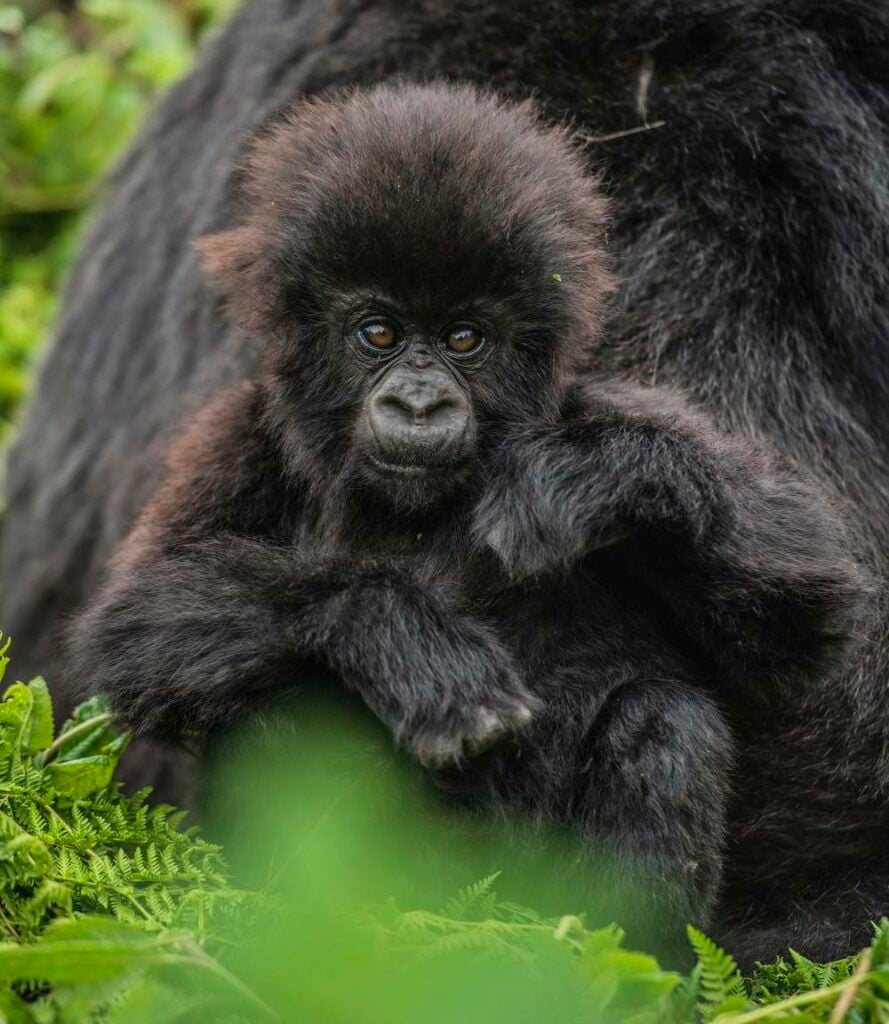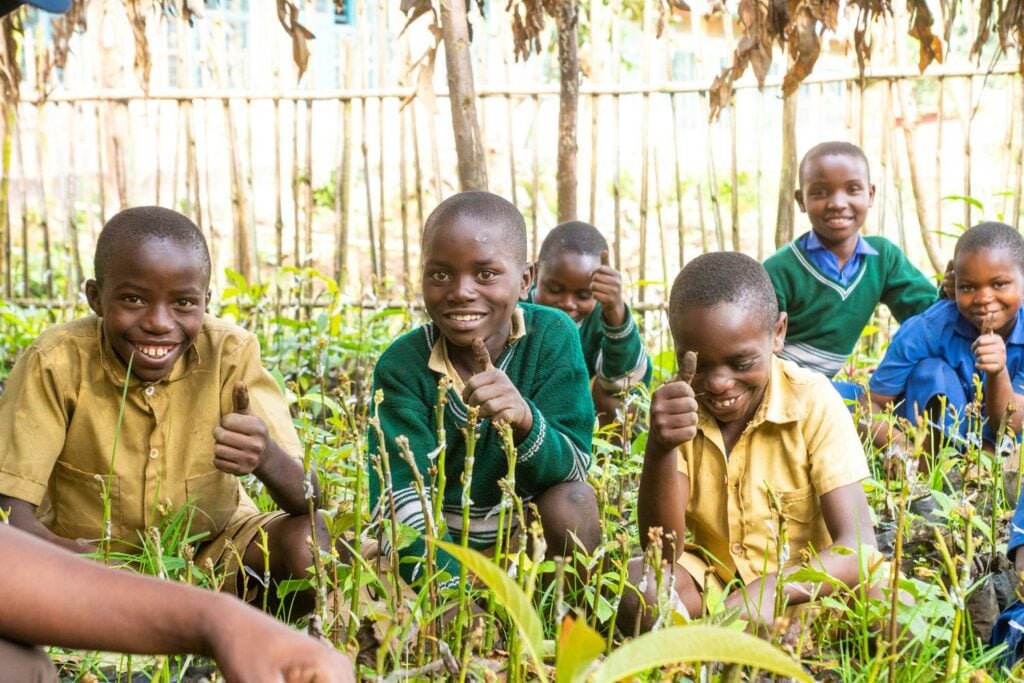Rwanda

About Rwanda
- Most-densely populated country in Africa.
- One of the smallest countries in Africa geographically, roughly the size of Maryland.
- Areas of wildlife protection include four national parks, maintained by the Rwanda. Development Board
- Varied terrain, including volcanic mountains as high as 14,000 feet (Mt. Karisimbi), as well as deep valleys, grassland, rivers and lakes.
Our Gorilla Conservation Work in Rwanda
The mountain gorilla population is critically small, with only about 1,000 individuals remaining, making them one of the most-endangered animals on earth. They live in a small forest that is surrounded by human development, among the highest density in Africa.
Our trackers, researchers and anti-poaching teams are in the forest every day to protect, monitor and study the gorillas, as well as other biodiversity in the forest.
Click here to read more about the Fossey Fund’s gorilla protection work.


Our Community Programs in Rwanda
Our community programs include initiatives on food and water security, livelihoods and education. They help lessen human reliance on the forest as a source of food or income, and help local communities thrive. Our programs reach some 30,000 people each year.
Goals
- Continue work with the Rwandan government and other partners to protect the mountain gorillas and their forest.
- Provide training for the next generation of local scientists and conservationists in the area.
- Help educate local communities about gorillas, conservation and their roles in protecting natural resources.
- Help communities thrive through education and livelihood efforts.
- Continue to conduct cutting-edge science aimed at developing effective conservation strategies.
Challenges
- Mountain gorillas live in a small protected forest, surrounded by human communities. There is still pressure on the forest for some resources, such as water, wood and food.
- The mountain gorilla population is critically small. With only about 1,000 individuals remaining, they are one of the most-endangered animals on earth.
- The mountain gorilla habitat is subject to pressures from global climate change, which may change the availability of the plants they eat and the areas they use.



